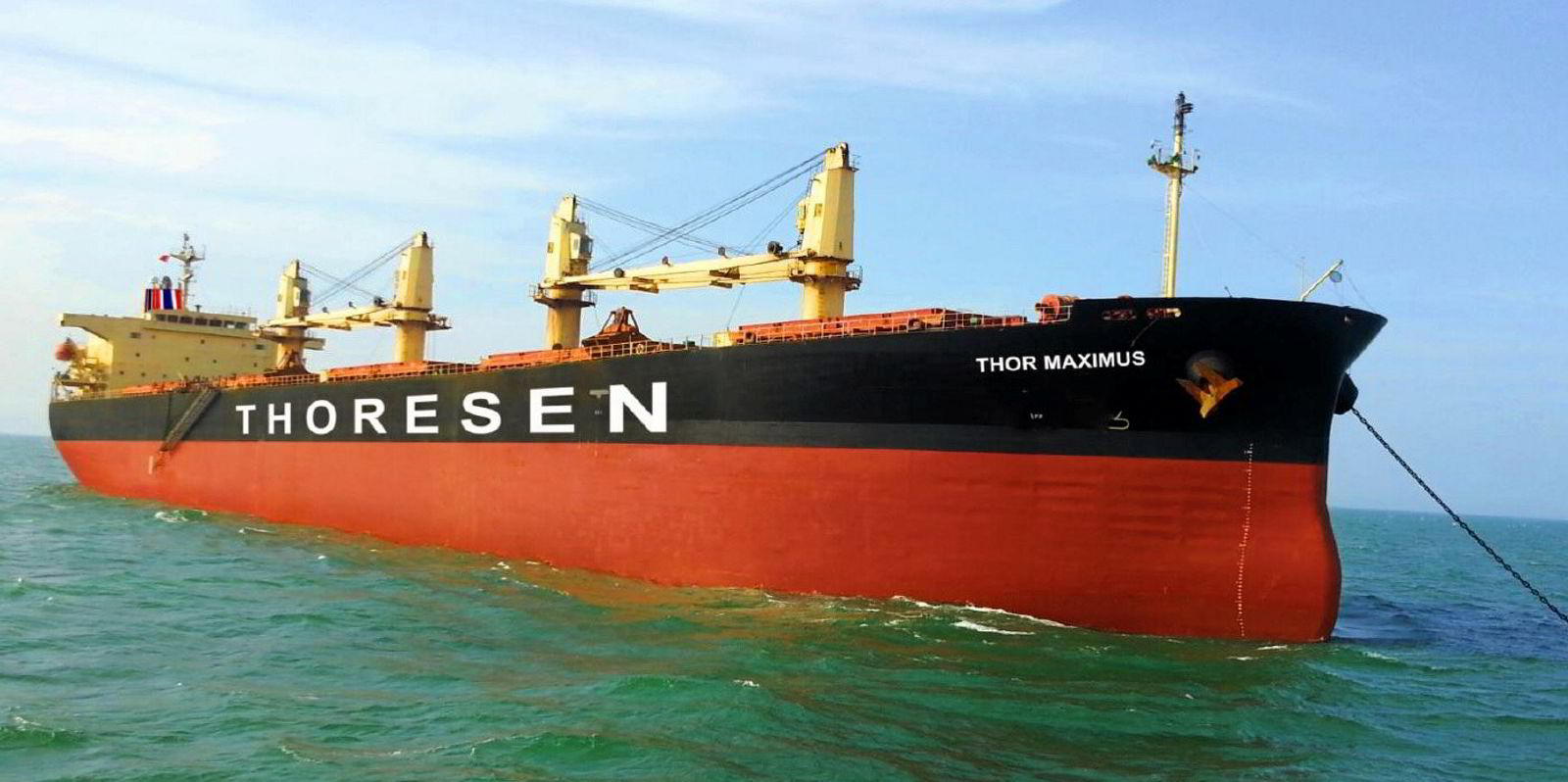Thoresen Shipping took full advantage of improving dry bulk markets to post a 20% year-on-year increase in first-quarter net profits.
The Thai supramax specialist posted net income for the first three months of the year of THB 656.4m ($18m) versus the THB 421.3m achieved 12 months ago.
However, revenue for the quarter was down 19% year on year at THB 1.7bn due to a reduction in the number of chartered-in vessels.
Thoresen said its supramax fleet achieved an average freight rate of $15,932 per day, outperforming the market average of $12,312 per day.
The highest rate achieved by one of its vessels during the quarter was $36,343 per day, up 33% on the highest rate achieved in the first quarter of 2023.
The Baltic Supramax Index averaged 1,178 points in the first quarter of 2024, up from an average of 925 points 12 months ago due to a strong export of key commodities and the rerouting of vessels away from the Red Sea, according to Clarksons.
At the end of the quarter, Thoresen Shipping controlled a fleet of 24 vessels made up of 22 supramaxes and two ultramaxes with an average size of 55,913 dwt and an average age of 16 years.
Separately, Thoresen Shipping said its owned fleet has adopted technical enhancements to lower CO2 emissions by adjusting engine power and ship speed, ensuring compliance with the Energy Efficiency Existing Ship Index standards across the entire fleet.
“Among the 24 ships, eight can operate at maximum speed, while the remaining 16 adhere to specified engine power limitation speeds,” the shipowner said.
“In terms of [the] Carbon Intensity Index, the fleet received passing grades according to standard criteria, categorised from levels A to C.”
In addition, Thoresen Shipping said it had reduced its CO2 emissions from 340,487 tonnes of carbon in 2022 to 303,009 tonnes last year, surpassing the targeted reduction of 2% with an 11% decrease.
“Shipping remains steadfast in upholding standards, enhancing fleet technical efficiency, and delivering maximum service efficiency to customers,” the company added.
Clarksons estimates that compliance with emissions regulations is expected to continue shaping the bulker supply, with 25% of bulker fleet capacity estimated to have received a D or E rating for CII in 2023.
Thoresen said this could lead to the adoption of slower operating speeds, higher retrofitting and increased demolition of older ships.





